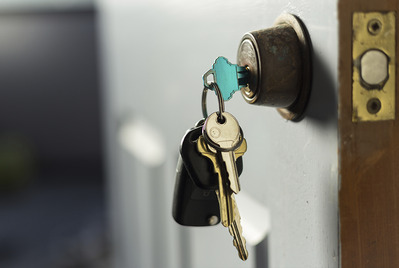
It was announced in the March 2016 budget that the Government would be bringing in the proposed higher rates of Stamp Duty Land Tax (SDLT) on purchases of additional residential properties from 1 April 2016. We’ve put together a few questions & answers to help you determine what this could mean for you. We recommend that if you are unsure about anything you speak to your Financial Advisor to determine if this additional stamp duty will apply to you. You can also use a Stamp Duty Calculator to get a rough idea of how much you may have to pay.
When does this come into effect?
1st April 2016.
How much is this higher rate?
The higher rates will be 3% above the current Stamp Duty residential rates. They will be charged on the portion of the value of the property that falls into each band.
| Band | Existing residential SDLT rates | New additional property SDLT rates |
| £0* - £125k | 0% | 3% |
| £125k - £250k | 2% | 5% |
| £250k - £925k | 5% | 8% |
| £925k - £1.5m | 10% | 13% |
| £1.5m + | 12% | 15% |
*Transactions under £40,000 do not require a tax return
Who has to pay it?
The vast majority of residential property transactions will not pay the higher rates of stamp duty. In particular, the higher rates will never apply where, at the end of the day of the transaction, an individual purchaser or joint purchasers only own one residential property. See below.

I’m selling my main residence and buying another main residence but I do own another property – will I need to pay the additional 3%?
As the purchase you have made, directly replaces your main residence, which you have sold – you will not have to pay the additional 3% stamp duty.
The below is from the Government’s consultation document:
A owns both a main residence and a second home. She sells her main residence and purchases a new one. Although she has two properties at the end of the day of the transaction, she has replaced her main residence so the higher rates will not apply.
However, if you had decided to rent out your main residence, rather than sell it the higher rates would apply.
Mr Harris owns a main residence. He is purchasing a new main residence, but rather than selling his previous main residence he will rent it out. At the end of the day of the transaction Mr Harris owns two properties and is not replacing a main residence (as he is not selling his previous main residence), so the higher rates will apply.
What happens if the purchase of new main residence goes through before I’ve sold my previous main residence?
The Government have acknowledged that there are likely to be instances where individuals will purchase a new main residence before selling their previous main residence.
In this situation the government does not want to increase the overall tax burden but it may be difficult to determine if there is the intention to sell the previous main residence and the government want to ensure the tax system remains robust to tax avoidance and abuse.
Therefore, the higher rates of SDLT will apply to such transactions but a refund mechanism will be introduced if the sale of their previous main residence is within 36 months of the purchase of the new main residence.
This refund will be on the difference between the amount of SDLT paid under the higher rates and the amount of SDLT that would have been due under the normal residential SDLT rates.
Mr and Mrs K own one property, with is their main residence. They decide to purchase another property which will be their main residence but have not sold their previous main residence. At the end of the day of the transaction they will own two properties and not replaced their main residence so the higher rates will apply.
However if two months down the line they sell their previous main residence and it has sold within 36 months of purchasing their new main residence they will be eligible for a refund.
If their previous main residence did NOT sell within 36 months of the purchase of their current main residence they would not be eligible for the refund.
Does this extra stamp duty apply to all buy to let properties?
No. It will only be applicable if, at the end of the day of transaction, you own two properties and you haven’t directly replaced your main residence.
Miss Hopkins purchases her first property, which she will use as a buy-to-let. At the end of the day of the transaction she owns one property, so she will not pay the higher rates of SDLT, even though she is not using it as her main residence.
However, if two years later Miss Hopkins purchases a residential property which she will use as her main residence, but she decides to keep her buy-to-let property then the higher rates will apply.
The higher rate will apply as she has two properties at the end of the day of the transaction and has not replaced a main residence (as she has not sold a previous main residence.
I’m purchasing a property with my boyfriend & he already owns a flat which we are going to rent out. Will we be subject to this increase in stamp duty?
As at the end of the day your boyfriend will own two properties and isn’t directly replacing his main residence so the higher rates will apply. Here’s the example in the Government guidelines of a similar scenario.
Barry and Claire are purchasing a property together. This will be Barry’s first property, but Claire owns another property that she is not selling. For Claire, this will be an additional property as, at the end of the day of the transaction, she will own two properties and is not replacing a main residence. Therefore, the higher rates of SDLT will apply.
I own a property that I live in and buying a flat for my daughter, does this higher rate still apply?
As at the end of the day of transaction you own two properties and are not replacing your main residence then the higher SDLT will apply.
Mr and Mrs Jones own a main residence together. They decide to purchase a property for their children to live in. At the end of the day of the transaction Mr and Mrs Jones own more than one residential property and are not replacing their main residence, so the higher rates will apply.
However, if you were to give your children financial help towards a deposit or even act as a guarantor on the mortgage as long as you do not jointly own the property, then the higher rates will not apply.
Where do you stand if I inherit a property?
SDLT is not currently paid on inherited properties and this will not change. However, inherited property will be relevant when determining if a purchaser is purchasing an additional residential property or not. For example:
Una owns a property which she uses as a main residence. She inherits her parent’s property where SDLT is not due. If Una decides to sell her parent’s property and use the proceeds to purchase a buy to let property, at the end of the day of transaction she will own two properties without replacing her main residence to the higher rate SDLT will apply.
What if I own a property overseas?
The surcharge will apply if the home you already own (or part-own) is overseas. So, if you have an apartment in Majorca that you use as a holiday home, you will have to pay the surcharge if you purchase an additional property in the UK.
The above Q&A and comments have been interpreted from the Government’s guidance document and do not constitute financial advices & meant for guidance only. If you are unsure or have any questions we recommend that you speak to your financial advisor.
The Your Move Content Marketing Team



